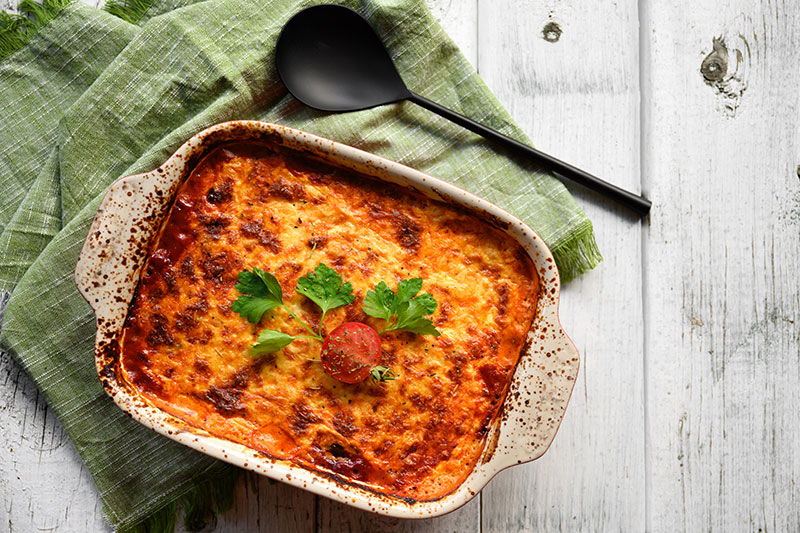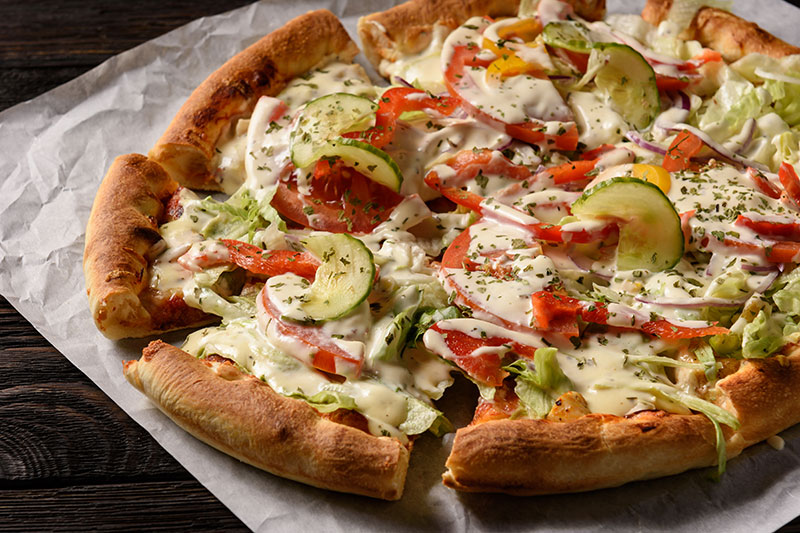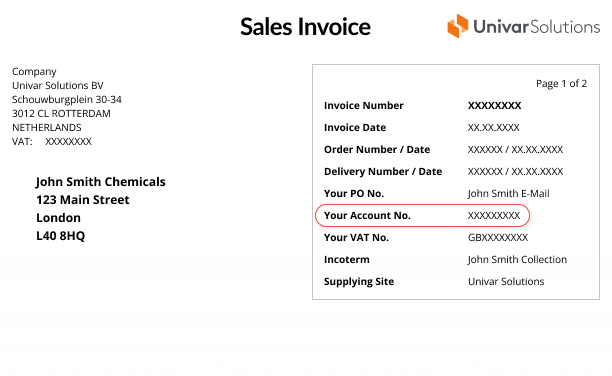We’re here to provide you with more information or help answer any questions you might have. Send us a note and we’ll get back to you as soon as possible.




Everyone loves a great comeback story – whether in sports, movies, pop culture, and, yes, even in the food and beverage space. The same resurgence is also proving true for the resilience of the frozen foods market, which accounted for $269.1 billion in 2022, with Europe dominating the market with a 33% revenue share. It is projected to eclipse $437.1 billion by 2032.
Not long ago, frozen ready-to-eat meals felt like a food and beverage industry vestige of the past associated with the "TV dinner" craze between the 1950s through the 1980s, which seemed destined for far lesser shelf space, if not possible elimination altogether. This is especially significant, considering that today's younger and millennial consumers focus on healthy nutrition more than ever.
Even as recently as the beginning of the 2010s, frozen foods were considered a category in terminal decline. Since their mid-20th century beginnings, frozen pre-cooked meals hadn't seen any significant changes aside from the 1980s, when low-sodium and low-fat diet trends prompted slight adjustments in formulation and revised marketing messaging.
However, consumers' view of frozen pre-cooked meals has shifted, particularly by infusing more all-natural, plant-based, and simpler ingredients into premade frozen dinners. Retailers also support the frozen food space to help contend with e-commerce food delivery and meal services. With major brands reformulating and reinvesting in healthy, ready-to-eat frozen meals, the reinvigorated category shows much promise and excitement for the food and beverage industry.
Additional reasons surrounding how frozen pre-cooked meals are once again finding appeal with younger consumers and prompting the current market comeback include:
- Improved quality that uses high-quality, healthier ingredients, reduced sugar, and various options for specific dietary needs, such as gluten-free
- Affordable pricing that offers a more budget-friendly option than restaurant dining without having to cook from scratch while also being more cost-effective than takeout or meal kits
- Sustainable solutions, including smaller portions to reduce food waste and improved packaging
- Acceptance of freezing as a natural preservation method that doesn't take away from food's nutrient value or freshness
- Convenience, most notably the time-saving effort to reheat and serve a meal in just a few minutes with push button ease
For even greater insights into the resurging state of the frozen dinner space, we recently spoke to Danielle Mailey, technical sales manager, Foodology by Univar Solutions.
What current consumer preferences and trends are you observing in the frozen ready-meal market?
Danielle: Big brands like Myprotein have entered the space with premium ready meals that hit all the key macros, using premium ingredients while still giving the convenience of a ready meal. The luxury ready-meal market is also still growing.
The cost-of-living crisis will see consumers giving up on luxuries like traveling and dining out. Brands that capitalise on offering these experiences will win in this area as shoppers will still want to treat themselves with affordable indulgences.
The ratio of branded meal innovation to private label is at a 10-year high, with 55% of European meal innovations coming from brands, offering them a huge opportunity to take over this space.




How have consumer preferences for ingredients and flavours in prepared frozen meals evolved recently? What are some examples of these ingredient products and solutions?
Danielle: In my experience, they no longer see ready meals as valuable unless the quality is as good as a home-cooked meal, and people will pay more for this. That means authentic flavours, powerful, impactful taste experiences, and texture.
Frozen food has been found to lock in quality without sacrificing flavour, offering consumers a cost-efficient means to discover new flavours, or enjoy familiar favourites. In the U.K., Asian and Spanish meals have grown the fastest from the 'fakeaway' trend. Restaurant brands are capitalising on this movement of selling their dishes in stores in a frozen format, including popular chains such as TGI Fridays and Zizzi, both launching frozen versions of their popular dishes.
How can manufacturers incorporate healthier and more nutritional options into their frozen-ready meal offerings?
Danielle: Manufacturers can enrich their offerings with additional protein using plant or milk proteins, reduce sugar by using stevia, or by adding fibre. By tapping into trends like satiety, manufacturers can offer more value to consumers.
High-fibre and high-protein options are looking more attractive than ever for consumers constantly looking for more cost-efficient choices that help them meet their health goals. The rise in popularity of lentils and pulses checks the value, satiety, and the plant-based trend. Plant-based nutrition is another crucial area in this category as more and more consumers opt for a flexitarian diet.




What technological advancements affect the production, preservation, and quality of frozen-ready meals?
Danielle: Production is pretty standard across the sites, but we are seeing an increase in quality due to the premium ingredients that are being used, such as clean-label starches, milk, plant proteins, fibre, and stevia, which are all premium functional ingredients to improve the organoleptic qualities of the product.
Ready meals have been found to have a higher level of sugar and salt in comparison to home-cooked meals. With health being a key attribute that drives buying behaviour, sweetening or sugar reduction solutions such as fructooligosaccharides (FOS) with fibre enrichment properties or plant-based sweeteners like stevia can help improve consumption.
Growing awareness about back-of-pack labeling and legislation around the Nutri-Score system also puts pressure on manufacturers to opt for clean-label solutions while reformulating. Innovation around enzymes and flavour modulators allows us to reformulate the same recipes while preserving the taste, texture, appearance, and mouthfeel that consumers are familiar with.
How can manufacturers balance affordability and quality in their frozen ready-meal offerings?
Danielle: Manufacturers can achieve balance by making sure the ingredients they are using are giving them what they need. For example, are they using the correct starch at the correct dosage? Could a garlic concentrate be cheaper than garlic puree? Can some of the cream be replaced with a clean label starch and give the same creamy mouthfeel? The answer is yes, and that's where we can help at Foodology by Univar Solutions.
Innovative solutions such as antioxidant systems can also extend the lifespan of frying oil, and enzymes that optimize ingredients are other methods that have been shown to reduce longevity.




What process is used to maintain the taste, texture, and nutritional value of frozen meals during the freezing and reheating process?
Danielle: The process is pretty standard, but the key to delivering the product's unique functionality is through the ingredients. Texture, taste, aroma, and appearance must be just right, so consider using freeze-thaw stable starches and natural flavours of garlic, onion, and herbs to give an authentic flavour. Ingredients such as whey, pea, or faba bean concentrates can boost protein.
Is there anything else you want your fellow formulators and food ingredient specialists to know about frozen-ready meals?
Danielle: The market is growing when it comes to fakeaway, luxury, or gym prep meals. These are bringing a new demographic into the world of frozen-ready meals. Many people cannot afford to eat out, so fakeaway and luxury meals can replace that. In addition, gym-goers or health-conscious people are now buying their weekly "meal preps" for convenience.
The cost-of-living crisis will only increase the demand for ready and frozen meals as the fakeaway culture takes over consumers. People will turn to these options to treat themselves, opening up a new demographic to this segment.
Options for gym-goers and health-conscious people are emerging and will continue to appear on shelves. Co-branded ready meals and meal prep kits will continue to thrive as consumers see the appeal of enjoying restaurant-quality food at home.
Learn how our Foodology by Univar Solutions technical specialists can help with food ingredient innovations and formulations for your frozen-ready meals.
References:
The Wall Street Journal, "Frozen Dinners Make a Comeback" https://www.wsj.com/articles/frozen-dinners-make-a-comeback-1536418800
IFT, "Frozen Foods Stage a Comeback" https://www.ift.org/news-and-publications/food-technology-magazine/issues/2019/february/features/frozen-foods-making-a-comeback
Yahoo! Finance, "Frozen Food Market to Reach USD 437.1 Bn by 2032, Europe Dominates with 33% of the Market Share" https://finance.yahoo.com/news/frozen-food-market-reach-usd-193700594.html



